A set of measures aimed at combating signs of pathology is usually individual and is selected by a dermatologist for each patient based on the nature of the disease, the patient’s health, and the presence (absence) of concomitant diseases.
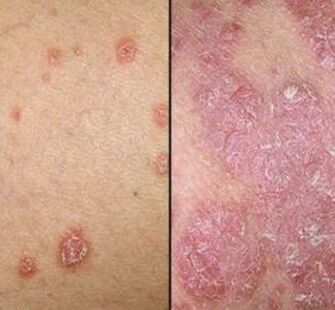
How to treat psoriasis on the head and body? The main principle is an integrated approach: patients are prescribed systemic drugs, local drugs, and physiotherapeutic procedures. Treatment is supplemented by proven home compositions made on the basis of natural components (medicinal herbs).
How to cure psoriasis on the head using system drugs? For this purpose, patients should take drugs of the following groups:
- Cytostatics (do not allow abnormal cells to multiply, prevent the degeneration of healthy structural elements of the epidermis into malignant formations);
- Antihistamines (relieve an allergic reaction - one of the factors provoking the exacerbation of psoriasis);
- Immunosuppressors (reduce the activity of the body's defenses);
- Sedative drugs (have a calming effect on the nervous system);
- Retinoids (suppress the activity of the sebaceous glands, do not allow abnormal cells to be propagated);
- Systemic biological agents (reduce the activity of immunity);
- Hormonal tablets (injections) - positively affect the general condition and well -being of the patient.
How to treat psoriasis on the head and body with the help of local (external) means? To this end, patients with an appropriate diagnosis are prescribed ointments, sprays, creams, "talkers" and solutions. The use of these drugs helps to cope with several medical tasks:
- Eliminate skin itching in psoriatic foci;
- Get rid of peeling;
- Cope with pain and discomfort, minimize the inflammatory process;
- Prevent the further spread of plaques in the body.
System and local treatment of the disease with medicines is necessarily supplemented with diet. So, patients suffering from manifestations of psoriasis should carefully monitor their daily diet. They are recommended to abandon such food:
- Greasy greedy meat broths, smoked meats;
- Spicy and overly salty dishes;
- Alcoholic drinks, exotic fruits, sweets;
- Strong tea and coffee;
- All that contains flavorings, dyes, preservatives.
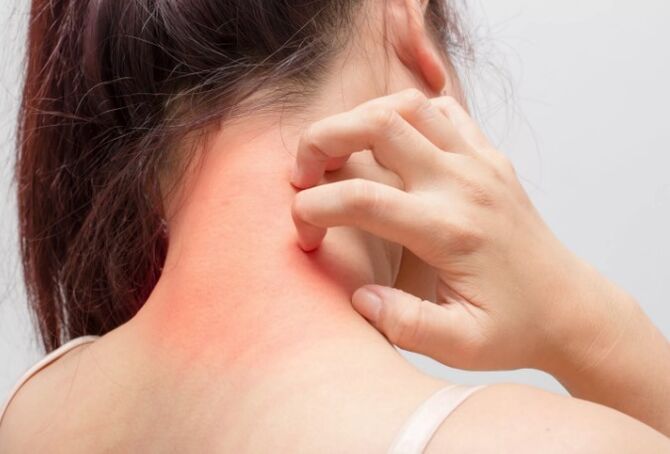
Those patients who think about how to cure psoriasis on their heads should forever forget about fried, fatty foods, "quick" carbohydrates (in particular, pastries), they should be introduced into a large number of vegetables and fruits, dietary varieties of meat (fish), as well as various porridges.
Physiotherapy for psoriasis on the body and the scalp:
- Light treatment (ultraviolet rays);
- PUVA-Methods;
- Acupuncture;
- Salt of the Dead Sea.
Symptoms of psoriasis on the head
With untimely treatment of psoriasis in the head area, negative symptoms in the form of active exfoliation and further replacement of plaques are cherish -colored with further replacement of the plaques. They can be observed not only on the scalp, but throughout the body.
Forms and stages of the disease
The residents of the Northern Hemisphere and countries with a temperate climate are more susceptible to this pathology, in the southern and tropical countries this disease is less common.
The disease is divided into the following stages:
Initial
Papules can be completely tiny sizes and can increase over time.This usually happens on previously injured surfaces. A few days later, a grayish tint may appear at this place, for several weeks of the disease does not progress. The formation of plaque speaks of the death of the epithelium and replacing it with new ones.
If the skin was not affected, this process takes about 3 weeks, and in people of patients with psoriasis less than a week, since the epithelium does not have time to renew, the formation of plaques with scales occurs.
Progressive
In which, as a rule, plaques begin to grow rapidly in quantity and size.They become more, can connect with each other and more actively covered with the formation of grayish scales. Around them, the skin becomes pinkish or red.
It is difficult to say, even first, how much the progression of scaly lichen will continue. This process can take a couple of weeks. Otherwise, this will continue for several months. This stage is still characterized by greater itching in the destruction places than usual.
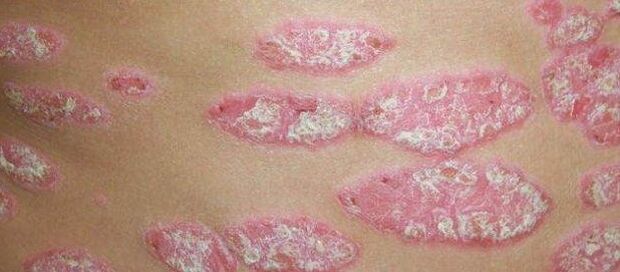
Stationary
With its onset, the progression of scaly lichen stops, and new plaques do not form.It can last an indefinite time, and then progression may continue again, and the process of remission may begin.
To understand that the stationary stage has begun will help that in addition to the termination of the formation of new psoriatic plaques, the available are completely covered with a layer of scales, and itching and other sensations that cause discomfort come to naught.
Regressing
I am pleasant for sick patients, since plaques begin to gradually acquire an ever -brighter hue, gradually acquiring a bodily color or disappearing altogether. They resolve, stop peeling, and for several months there is no trace of them.
For each patient, the deadlines for regressing stages are individual, sometimes this period can occupy from a few months to several years, or even more.
Disadvantages of non -traditional methods of therapy
Disadvantages of folk remedies:
- Often in the recipe, incompatible ingredients are connected.
- The effectiveness of many methods is not officially proven.
- The use of a recipe from one disease can provoke the development of another.
- An excessive amount of herbs can cause an allergic reaction.
- Some plants are toxic.
- The slow onset of the therapeutic effect.
Symptoms and the first signs of psoriasis on the head
Hair psoriasis often has a soft current and is almost invisible. Signs of psoriasis of the head are individual, and therefore some patients may develop severe progression of the disease, which includes the formation of ulcers and a long course of pathology. Intensive itching causes sleep disorders, and gross combs lead to skin infection and hair loss.
What does psoriasis of the head look like? A mild degree of disease has less pronounced manifestations: barely noticeable point rashes are noted, which practically do not cause the patient any discomfort.
Moderate and severe degree includes the following symptoms and signs of the disease:
- Rocky uneven spots of a red-violet shade.
- Dry scalp.
- Peeling appears, resembling dandruff.
- Unbearable itching.
- Burning and pain in the area of rashes.
- Bleeding arising from scratches or removal of scales.
- Temporary hair loss.
If the patient has a history of psoriasis on the head and some of the above symptoms, this serves as a reason for re -contacting a dermatologist.
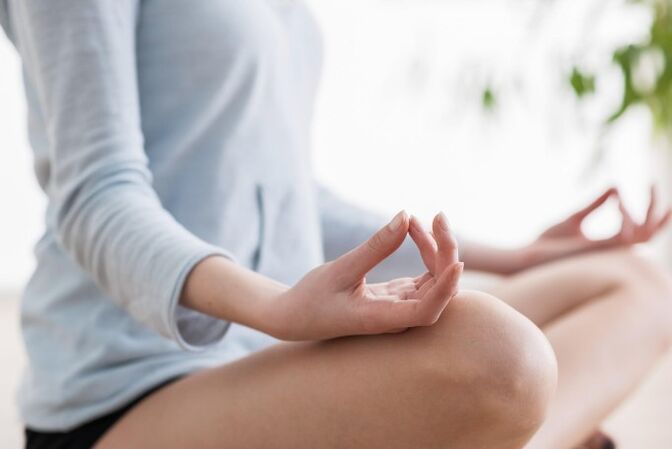
Prevention
In order to prevent the appearance of psoriasis of the scalp, it is useful:
- Avoid overheating and sunburn.
- In time, diagnose and treat any diseases.
- Wash and combing your hair with caution.
- Periodically carry out the head of the head by means of treatment and prophylactic shampoos.
- Adhere to healthy and good nutrition.
- Avoid negative emotions, avoiding stressful states.
- Select cosmetics for skin and hair skin care in accordance with their type.
Despite the fact that psoriasis of the scalp is a serious disease, its treatment can be quick and painless. The main thing is to adhere to the recommendations of doctors and carefully monitor their health, preventing any pathological manifestations.
Psoriasis on the head: treatment with pharmacy products
How to treat psoriasis on the head? For therapy for the light stage of the disease, it is usually enough to conduct a course of treatment with local drugs. When visiting a pharmacy, you should pay attention to the followingHighly effective drugs:
- Ichthyol ointment.Aimed at eliminating inflammatory processes. In addition, it is a good antiseptic and has an analgesic effect.
- Salicylic ointment.It is well known for its antiseptic and anti -inflammatory properties. Also accelerates the healing process of the skin of the scalp. You can use ointments that contain 1-2% of the active substance.
- Naphthalan ointment.It has an antiseptic effect, stops inflammation processes, relieves pain. In addition, the effect of this ointment is aimed at the speedy regeneration of cells of the scalp epidermis.
- Drugs containing tar.Aimed at suppressing rapid cell growth. Accelerating the process of exfoliation. Contribute to the speedy healing of the skin.
- Antihistamines.Aimed at eliminating itchy and pain. Also relieve inflammation well
- Ointments, which include vitamin D3Suppress the active growth of epidermal cells. Also, their action is aimed at increasing the immune system of the skin. Stop the development of inflammatory processes.
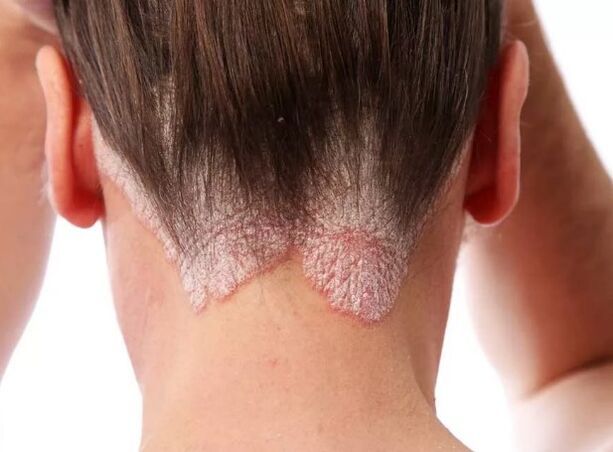
Reasons
A characteristic feature of this pathology is the plaques on the head, located not in the hair, but on the skin. These scaly foci can have different sizes and in most cases indicate the development of the initial stage of the disease. Psoriatic scales can be easily distinguished from dandruff by excessive sebaceous secretions.
As the main cause of the development of psoriasis of the head, modern medicine considers a violation of metabolic processes in the body.
It should also be noted some factors that can provoke the appearance of this pathology:
- Mechanical damage to the skin located in the scalp.
- Weakened immunity.
- Patient exposure to stressful situations.
- Improper and non -operating nutrition.
- The progression in the body of a patient with chronic ailments having an infectious etiology.
- The presence of addictions, in particular, abuse of alcohol-containing drinks and smoking.
- Violations in the work of the digestive tract.
- Prolonged medication (especially steroid).
- A systematic effect on the hair and skin of the heads of low temperature conditions.
- Hormonal disorders (for example, a period of pregnancy, transitional age, endocrine diseases, etc. ).
Suddenly, psoriasis on the back of the head, eyebrows, forehead and beard can appear in a female and male audience, whose age exceeds 35 years. In patients of the younger age group, this ailment develops due to genetic predisposition. According to statistics, which is conducted by medical institutions from around the world, this form of psoriasis progresses within 5 days, while on other parts of the body the disease can occur in acute form for 3 or more weeks.
Localization of foci of defeat on the head
Psoriasis on the scalp is the most common form of the disease. It occurs in more than 60% of cases. In the absence of treatment, pathology often goes into more serious forms. Psoriatic lesions are localized mainly in the following areas:
- the skin above the ears, followed by ears;
- forehead, occipital part;
- rear surface of the neck;
- The parting of the hairy part.
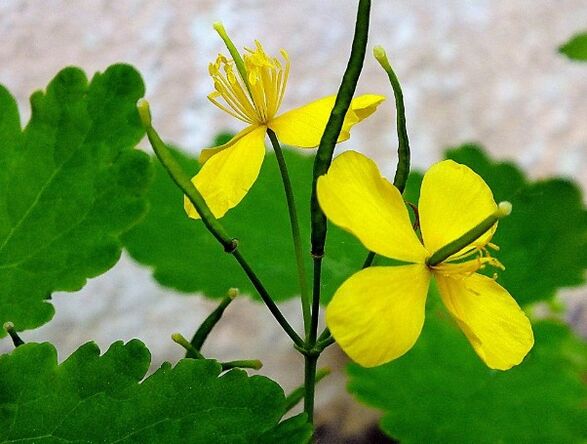
Tips for traditional medicine
How to cure psoriasis on the head using folk recipes? As independent means, they are not enough. But the additional use of home recipes for the treatment of psoriasis on the scalp is quite effective.
Recipe 1
Pass 300 grams of celandine grass through a meat grinder, squeeze the juice from the resulting mass. Add to it 30 ml of red dry wine. Smell the affected areas of the scalp with this mixture. Leave at least 15 minutes, then thoroughly wash off.
Recipe 2
Lubricate the scalp with alcohol infusion of celandine. To prepare it, a quarter glass of dry grass pour ½ liter of medical alcohol and leave for several hours. This folk remedy for psoriasis has a strong effect and can cause skin irritation. When unpleasant sensations appear, it should be washed off with a neutral agent, and the hair is rinse with a chamomile infusion.
Recipe 3
Tincture prepared on the basis of young sunflower baskets has a pronounced anti -inflammatory effect and prevents the further reproduction of bacteria. The next means recommended by folk medicine is suitable for the treatment of psoriasis, accompanied by infectious damage to the sections of the scalp of the scalp.
Two baskets of sunflower should be thoroughly washed, finely chopped and approximately 100 ml of white wine. Close the dishes with a lid and leave for 48 hours, then squeeze the juice. It must be used as a compress. It is also recommended to simply lubricate the skin with sunflower tincture.
Recipe 4
Mix light petroleum jelly or solidol (300 g) with two proteins of chicken eggs, add a spoonful of linden honey and a spoon of celandine herb with a powder. Lubricate the affected skin with ointment.
Recipe 5
Psoriasis on the head can be cured, using rosehip stalks at home. The dried branches must be burned, the ash is collected in clean dishes, mix with the same amount of petroleum jelly and use as an ointment. As a rule, with daily application, the effect appears in a week. Since such a tool leads to rapid hair pollution, it is recommended to wash them every day with soap with tar or special healing shampoo.
Recipe 6
Treatment with folk remedies also involves the use of infusions and decoctions for internal administration.
One of the effective recipes for psoriasis on the head is the infusion of black bezine. It must be consumed 1/2 cup (preferably after eating - about an hour later). The tool is prepared as follows: pour a spoonful of an elderberry flowers 450 ml of boiling water, insist an hour and a half.























